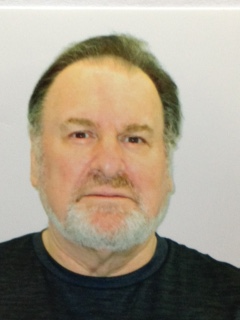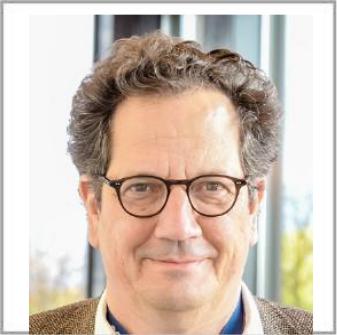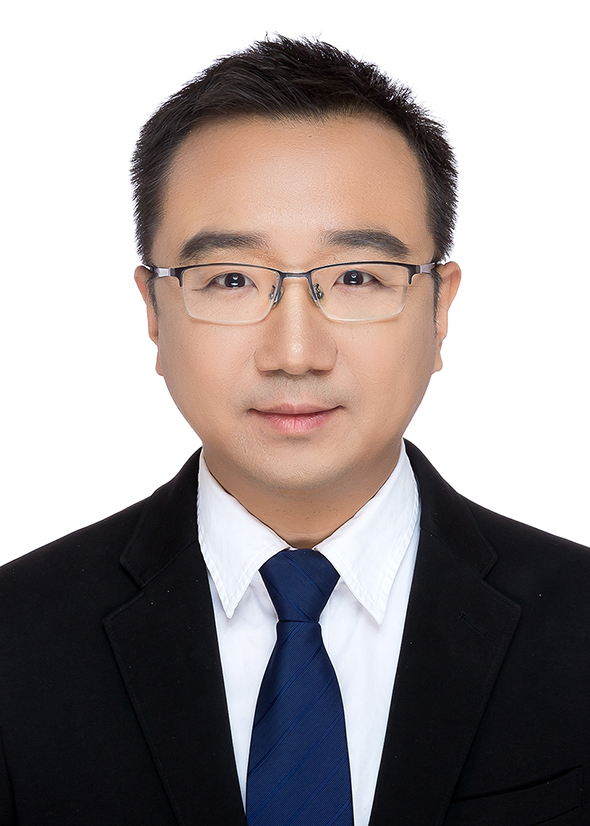Day 1 :
Keynote Forum
Ying WANG
South China Botanical Garden, Chinese Academy of Sciences, CHINA
Keynote: Sustainable utilization of Epimedium species

Biography:
Dr. Ying Wang was awarded PhD degree in 2002 in Clemson University in US, then work as a postdoc in Cornell University for 3 years. She has been a faculty member at South China Botanical Garden, Chinese Academy of Sciences (SCBG-CAS) since 2015 after working at Wuhan Botanical Garden for about 10 years. She has been working on genetics and genomics of Chinese medicinal plants, especially biosynthesis and regulation of secondary metabolites. She has published 162 papers and 10 patents.
Abstract:
Epimedium, also known as Horny Goat Weed or Ying Yang Huo, has been extensively used as traditional medicinal plant in China for more than 2000 years. In the last decade, although Epimedium studies have focused on the extraction and medicinal function of the bioactive compounds such as epimedin A, epimedin B, epimedin C, and icariin, little is known about the potential molecular mechanism for the biosynthesis and regulation of these bioactive compounds in Epimedium. Genetic and phytochemical diversity of wild medicinal materials will be presented. Structural genes and regulatory genes involved in Epimedium flavonoid pathway were studied. Moreover, several key genes have been functionally characterized, including GTs, OMTs and PTs. The synthetic pathway of icariin was successfully identified, and icariin can be synthesized in transgenic yeast cells. The quality control of Epimedium will also be discussed for wild plant materials, cultivated plant materials and synthesized compounds.
Keynote Forum
Uswatun Hasanah Zaidan
Universiti Putra Malaysia, Malaysia
Keynote: Evaluation of solvent effects on the extraction of phenolic compounds and in vitro antidiabetic potential of Stevia rebaudiana extracts

Biography:
Uswatun Hasanah Zaidan has completed her PhD at Universiti Putra Malaysia (UPM) in the Department of Chemistry, Faculty of Science in 2011. She was appointed as a Senior Lecturer at the Department of Biochemistry, Faculty of Biotechnology and Biomolecular Sciences, Universiti Putra Malaysia in 2012. She has completed her Postdoctoral studies in the School of Biosciences at University of Nottingham, United Kingdom from 2013-2015. Her research interests include food and nutritional biochemistry and bioactive compounds. She is a Member of Malaysian Society for Biochemistry & Molecular Biology (MSBMB), Formulation and Applied Science Research Group, UPM and also an Associate Researcher of Halal Product Research Institute, UPM.
Abstract:
Apart from being well known to the world as herb-based sweetening additive, Stevia rebaudiana (S. rebaudiana) and its phenolic compounds are considered as natural antidiabetic alternative to replace synthetic drugs that possess numbers of side effects. Therefore, this study was conducted to evaluate the solvent effects on the extraction of phenolic compounds of S. rebaudiana using water, methanol, ethanol and acetone as well as in vitro antidiabetic potential of the extracts. Quantification of the total phenolic content (TPC) and total flavonoid content (TFC) of the extracts were conducted using Folin-Ciocalteu reagent and aluminium chloride colorimetric method, respectively, while the antidiabetic activity of the extracts were determined by ?-amylase inhibitory assay. As a matter of interest, TFC was found to be present at the highest concentration in ethanol extract (10.91 mg QE/g), while the presence of TPC showed no significant difference between water extract (6.65 mg GAE/g), methanol extract (6.96 mg GAE/g) and ethanol extract (6.43 mg GAE/g). These hence make more polar solvent as the most potential solvent for phenolic compounds recovery. In relation to the antidiabetic potential, the effects of the extracts in inhibiting ?-amylase activity were investigated in vitro. Interestingly, among all S. rebaudiana extracts, water extract exhibited the most significant ?-amylase inhibitory activity with IC50=8.63 ?g/ml, comparable to synthetic drug, acarbose IC50=13.73 ?g/ml. In addition, all the extracts were further analyzed using HPLC and showed the abundance presence of steviol glycoside in the water extract, the principal compound suggested for treating diabetes. Furthermore, GC-MS analysis has shown the major compounds found in all extracts were phenol, benzofuranone, nerolidol, spathulenol, caryophyllene oxide, indanone, phytol, ?-amyrin and several long chain fatty acids. These findings demonstrated that phenolic recovery was highly dependent on extraction solvent and the promising water extract as the best ?-amylase inhibitory potential with greatest steviol glycoside recovery.
Keynote Forum
Arend L Mapanawang
STIKES Halmahera, Indonesia
Keynote: New hope the handling of HIV/AIDS by herbalove comparison of fruit golobe, pangi leaves and lamivudin on test in vitro

Biography:
DR. Arend L. Mapanawang, Sp.PD, Finasim is the director of Health Medical College in Halmahera, North of Maluku, Indonesia as well as the Editor-in-Chief of International Journal of Health Medicine and Current Research (www.ijhmcr.com), Chairman International Arend Index (IAI), and International Conference on Health Medicine (ICCHM) dr. Arend (usual nick name) is an expert in herbal medicine including for the curing of malaria, HIV virus, and hepatitis, as well as a practical doctor for healing many other internal body parts of human being deceases with more than 20 years experiences. He had written various books including history and the cause of world wars books. His publications in various international journals have made him as a prominent invited speaker in the world such as in South Korea, United Kingdom, and USA. Curently, Dr. Arend is the best scientist in the whole North Maluku province of Eastern Indonesia. On 27th February 2018, Dr. Elim and Dr Arend gave a quest lecture in the best and oldest university of Indonesia in Jakarta: a new history in Indonesia that scientists from a small university provided their best knowledge to a huge prominent university scientists and students.
Abstract:
HIV / AIDS became a global problem, which after 1982 found HIV virus and drug Lamivudin in Discover Year 1995, 34 years passed but until now has not been able to minimize HIV / AIDS virus in the world. A new hope fore after the innovation of a STIKES Institute Halmahera Mollucas Halmahera, Indonesia, find Herbal Medicines or Herbal love that comes from Golobe Family Fruits Zingiberaceae with Antioxidant 6,5 mg / ml, Antibacterial power with MTT and PCR test reached 43.34% at 800 ppm and 3.125 ppm reached 39.88%, while the leaves of Pangi 800 ppm inhibition reaches 94.80% and 450 ppm reaches 80.50% while Lamivudin at 100 ppm 28.87% and at 50 ppm reaching 46.65%. Herbal love Golobe (Zingiberaceae) Leaves Pangi is a new part in the field Pharmaceuticals and Medicine after these two herbal ingredients outperformed the Lamivudin drug has been used for the treatment of HIV / AIDS for 24 years. On the Multitasking Test show improvement because Herbalove Golobe is very strong antioxidant 6.5 mg / ml, found the uniqueness of Chemical where there are 4 types of chemical bonding N-H (bonding), C = C, C-C and C-H which are associated with health problems at human. On the leaves Pangi found triple bonding with C ??? C. Hope fore with herbal found capable inhibits Retrovirus (HIV) up to 94.80%, indicates the progress of a tropical disease Infection in the future. This research While the test takes place after In Vivo and the Clinic trial on HIV/AIDS patients as well as Retroviruses such as Hepatitis. Currently in the world for herbs with inhibition The highest retroviruses are from the ingredients Pangi leaves with day inhibition of 94.80% is the thing that encourages the expectation new treatment of HIV / AIDS disease in the future. The FTIR Test has peak 3510,6, intensity 16,38 Base (H) 374,85, Base (L) 3497,09, area 141,06, corana 13.26
- Traditional Chinese Medicine
Location: Johnson

Chair
Ray Cooper
The Hong Kong Polytechnic University, Hong Kong
Session Introduction
Ray Cooper
The Hong Kong Polytechnic University, Hong Kong
Title: Chinese and botanical medicines: TCM needs TQM

Biography:
Dr Ray Cooper was born in the UK, received his Ph.D. in organic chemistry and after 15 years in R&D in the pharmaceutical industry, he moved to the dietary supplements industry. He developed new Chinese botanicals as supplements including Cholestin, Cordymax and Te-Green. Currently Ray is visiting professor and lecturer at the HK Polytechnic University and co-founder of PhytoScience LLC, a consulting company creating innovative botanical solutions and products. He is the recipient of the 2014 American. Society Pharmacognosy Tyler Prize for his life time contributions to Botanical Research. He is also a Fellow of the Royal Chemical Society, UK. Ray has recently published three books: Natural Products Chemistry: Sources, Separations and Structures (CRC PRESS) and Botanical Miracles, Plants that Changed the World, and Chinese and Botanical Medicines. He has edited 5 books, most recently, Botanical Medicine: from Bench to Bedside and published over 100 peer reviewed scientific articles.
Abstract:
There is a need to improve and promote the scientific inquiry on the study and use of botanicals, natural products and Chinese medicine, in order to secure global acceptance. Although there is an enormous history of use of Chinese medicines a better understanding of these preparations and formulae within the scientific and international community is needed, and one approach is to include a total quality management program (TQM). The aim is to present case studies on selected botanicals and natural products to provide scientific data that could substantiate the health claims. One example is the inhibition of ENOX2 (tNOX), a molecular target to examine anticancer activity of green tea catechins. The relation between green tea catechins and cell protection through a cell surface protein, ENOX2 has been identified. When the ENOX2 of cells is inhibited, the cells fail to enlarge after division, cease to divide, and after a few days undergo apoptosis. To date, epigallocatechin gallate (EGCG) in green tea is the most effective polyphenol ENOX2 blocker found without any adverse effects on normal cells. Synergistic combinations of green tea concentrate and powdered capsicum reduces oxidative stress as an approach to elimination of malignant cells in both cancer (HeLa) and non-cancer (MCF-10A) cells. Some preliminary data on green tea and other examples of well-known botanical medicines described in Chinese folklore will be presented that reflect the need to incorporate TQM into TCM.
Chrisna Gouws
North-West University, South Africa
Title: The importance of suitable advanced cell culture models for the study of traditional African phytomedicines

Biography:
Chrisna Gouws has completed her PhD in Biochemistry from the North-West University, South Africa in 2012, and pursued Postdoctoral studies in the Centre of Excellence for Pharmaceutical Sciences at the North-West University. She is also currently appointed as a senior researcher in the Centre. She has published more than 16 papers on traditional African medicines and advanced cell culture models in international peer-reviewed journals, and is frequently cited. Her current research activities focusses on developing new models for applications in drug research, including traditional medicinal remedies and plant materials and their possible interaction with conventional medicines.
Abstract:
Traditional herbal medicine remains popular, and the African continent has a rich biodiversity and accessibility to diverse medicinal plants. Although many benefits have been derived from the use of herbal medicines, many concerns are associated with their use. This includes unknown transport characteristics, unknown toxicity levels and potential herb-drug interactions which have been identified to have a rising impact on patient treatment outcomes. Traditional African medicines can modify pharmacokinetics properties of co-administered drugs, while frequently used herbal medicines have proven to be toxic. However, literature to this regard is limited and often contradictory, highlighting the need for more research. In vitro pharmaceutical and biological evaluations are traditionally performed in two-dimensional (2D) mammalian cell cultures. These models have extensive shortcomings and reduced physiological relevance, resulting in an international effort to move to more advanced cell culture models for biomedical research. Such advanced cell models vary from more complex growth support to advanced three dimensional (3D) cultures. 3D cell culture systems have been proposed as an alternative to mimic in vivo conditions more closely, and these complex and advanced models have numerous applications in basic research, but also in applied research such as drug development, cancer research and toxicity studies. Cells grown as active 3D spheroid cultures ensure higher physiological relevance of experiments, and are essential to reduce the discrepancies between in vitro data and case studies. This requires different advanced cell culture models for each research question, and can range from dynamic three-dimensional spheroid cultures to air-liquid interface models.
Tsai-Ju Chien
Taipei City Hospital, Taiwan
Title: The concern and perspective between precision medicine and Traditional Chinese Medicine

Biography:
Dr. Tsai-Ju Chien is a Hemato-Oncologist as well as a TCM doctor. The unique character of her is that she practice both TCM and western medicine in the same time in clinical for years. She devotes herself in bridging the gap between TCM and main stream medicine. What she focused is not only clinical care but also the basic research. She therefore extends her interest and research from clinical trial to basic study; from TCM herb to acupuncture. She has the passion to coordinate oriental and western medicine by applying modern method and therefore to reconcile the holism and reductionism.
Abstract:
Traditional Chinese medicine has a historical based-theory which has been adopted in oriental countries. It is gradually being noted by the western world for the limitation of reductionism of mainstream medicine and TCM is often seen as more accessible and acceptable. It is clear that the unifying systems theory of TCM could complement the western medicine; thus, TCM has raised the public's attention and more and more issues are worth discussion1,2. As precision medicine is so hot, some scholars now try bridge western medicine and TCM by precision medicine and there could be some concern and prospect towards this issue from different viewpoints. To sum up, personalized medicine has been stressed in recent years albeit it is an old lesson. Mapping the molecular pathway for each Chinese herb or finding biomarkers for targeted population or specific TCM syndrome help to fill the gap between TCM and mainstream medicine. By the way, only with these evidence-based study can we integrate the holism and reductionism. Actually, taking a purely holistic approach will result in some bias and criticism, especially when quality control of medicinal products and the reproducibility of results comes into question. On the other side; pure precision medicine approach cannot totally cover the essence of TCM; especially hard to explain the concept of excess and deficiency; Yin-Yang; TCM syndrome and multi-effect between mixing herbs. Consequently, a middle way might be considered in order to make the best of East and West and brings them together for the benefit of all.
Gabriel Felley
University of Applied Sciences Northwestern, Switzerland
Title: A millennium-old Chinese wisdom book in the mirror of current knowledge from the natural sciences

Biography:
Dr. Gabriel Felley is Professor of Business Information Technology at the University of Applied Sciences Northwestern Switzerland. He studied Theoretical Physics at the Swiss Federal Institute of Technology Zurich. For decades he has been dealing with the Yi Jing (I Ching) to rehabilitate it as a sophisticated, holistic methodology to understand the logic underlying the processes of change in a generic way and to promote it as a tool supporting managerial decision-making processes. He has written numerous articles and lectured on Yi Jing’s related topics in Switzerland as well as in Germany, China, Vietnam and the USA. He is actually planning a series of seminars to be held together with the Zhengzhou University. These seminars should sustain a convergence of the traditional Chinese understanding of the Yi Jing with the Western interpretation.
Abstract:
The Yi Jing or "Book of Changes" is a unique philosophical system whose genesis dates back more than 3,500 years in ancient China. In Europe and the USA, it was only perceived at the turn of the century. The Yi Jing became known in Europe and the US in the early 20th century by the popular translation of Richard Wilhelm. The enthusiastic interest of C.G. Jung, founder of the analytical psychology and of the concept of collective unconscious, for this book helped it to a certain recognition in philosophical and psychological circles of science. To this day, the mystery of its origins and its structure remains largely unresolved. In this article the author shows the basic principles of this universal framework, which can be considered as the theoretical background of the Traditional Chinese Medicine. Astonishingly there are fascinating parallels between these principles and the most modern scientific phenomena and theories such as Quantum physics. Establishing such links may help to strength the legitimation of the therapeutic approach followed by the Traditional Chinese Medicine. Additionally two practical examples illustrate the pertinence of the Yi Jing methodology to handle, even philosophical or psychological, questions.
- Pharmacognosy | Phytochemistry | Ethnopharmacology | Crude Drugs and Plant Products
Location: Johnson

Chair
Stephanie Wagner
Laurinsteig 16, Germany
Session Introduction
Asma Waheed Qureshi
GC Women University, Pakistan
Title: Anti-fasciolic efficacy of some medicinal plants in comparison with triclabendazole in naturally infected buffaloes
Biography:
Asma Waheed Qureshi has completed her PhD at University of The Punjab, Pakistan in 2010. Currently, she is working as an Associate Professor and Head of The Department of Zoology at GC Women University, Sialkot, Pakistan. She has published more than 20 research articles in reputed journals and presented papers in national and international conferences.
Abstract:
The current study Caesalpinia crista (seeds) and Saussurea lappa (roots) were used to treat buffaloes naturally infected with fasciolosis and their efficacy (%) was compared with triclabendazole. A total of 81 (72 infected and 9 normal healthy) buffaloes (Bubalus sp.) of Nili Ravi breed, 6.0�0.1 years of ages and both sexes naturally infested with fasciolosis were used for anthelmintic trails. The infected buffaloes were randomly divided into four main groups??? i.e. C, S, T and I. Animals in groups C and S were further sub divided into three sub groups i.e. C1, C2, C3; S1, S2, S3, each having nine animals. Two more infected groups T and I also have nine infected animals each while group G with nine healthy normal animals. Sub-groups C1 and D1 were given dose level of 50 mg/kg body weight, C2 and D2, 100 mg while C3 and D3, 150 mg/kg body weight of crude Caesalpinia crista (seeds) and Saussurea lappa (roots), respectively. Group T was given triclabendazole (10 mg/kg body weight). While for the comparison of animals in I and G served as infected and healthy control groups, respectively. Efficacy (%) for triclabendazole was 100% after first dose while for the two herbal medicine, after administration of second dose of 150 mg/kg body weight. Anti-fasciolic effects of these plants may be due to the presence of metabolites like alkaloids, tannins, saponins, phenolic compounds and flavonoids. The two plants were found significantly (P<0.05) effective and safe to use against fasciolosis.
Jyothi Penta
Kakatiya University, India
Title: Drug interaction studies of sitagliptin with diosgenin
Biography:
Jyothi Penta has her expertise in herb-drug interactions, pharmacokinetics and pharmacodynamics. Her evaluation of PK/PD on animal models shows the increase in drug concentration in the presence of other drug/herb. She had experience in estimation of serum biochemical parameters. Her main focusing was on natural products, drug metabolism, pharmacokinetics and pharmacodynamics.
Abstract:
Diosgenin is a naturally occurring steroid saponin found abundantly in yams and legumes. Diosgenin is metabolized by inhibition of CYP3A4 enzyme. Sitagliptin is an oral antihyperglycemic agent used for the treatment of NIDDM. It belongs to class DPP-4 inhibitor. It is also metabolized by CYP3A4 and CYP2C8 enzymes. We have studied the drug interaction study of diosgenin with sitagliptin in experimental diabetic rats. Diabetes was induced in the albino wistar rats intraperitoneally using 55 mg/kg streptozotocin (STZ). Then they were divided into four groups of six each. Group I treated with sitagliptin (10 mg/ kg), group II treated with diosgenin (20 mg/kg), group III treated with diosgenin followed by sitagliptin and group IV treated with diosgenin for 7 days and on eighth day followed by sitagliptin. Blood samples were collected from orbital puncture at time intervals between 0, 1, 2, 4, 8, 12, and 24 hrs using heparinized capillaries. Serum was separated by centrifugation and stored at ??? 20�C until further analysis. Different biochemical parameters like total cholesterol, triglycerides, AST, ALT, serum total protein, serum insulin; total antioxidant status and lipid peroxide levels were also estimated by using respective methods for 28 days. The obtained pharmacokinetic data shows increase in Cmax, Tmax, AUCtotal, AUC0-n, t�, MRT and decrease in Vd and CL in both normal and diabetic rats. In pharmacodynamic study group IV shows decrease in serum glucose levels at all time points. The blood glucose level was decreased more in group IV in diabetic rats when compared to other groups in normal and diabetic rats. In diabetic condition total cholesterol, triglycerides, AST, and ALT levels increases and serum total protein and serum insulin levels decreases. All the serum biochemical parameters were regulated by both diosgenin and sitagliptin. But it was seen more in group IV rats when compared to other groups. After administration of diosgenin and sitagliptin regulate all the biochemical parameters more in group IV when compared to other groups. Diosgenin showed its antioxidant effect and decreased the lipid peroxide levels in diabetic condition more in group IV than other groups. There was very significant (p<0.001) influence on the percentage of glucose reduction in diabetic rats under multiple dose treatment but less significant (p<0.05) influence in normal rats. Thus, the improved pharmacokinetic parameters of sitagliptin was more observed in the multiple dose treatment groups, and the improvement of pharmacodynamics was significant in only diabetic rats under multiple dose treatment, thus showing the significance of influence of diosgenin in multiple dose exposure under diabetic condition. This may be due to synergistic effect of diosgenin and sitagliptin by inhibition of CYP3A4 in STZ induced diabetic rats. Hence sitagliptin dose may require special attention if used along with diosgenin or herbal preparations containing diosgenin to avoid complications.
- Herbal Medicine | Acupuncture | Oriental Medicine
Location: Johnson

Chair
Lidao Bao
Inner Mongolia Medical University, China
Session Introduction
Lidao Bao
Affiliated Hospital of Inner Mongolia Medical University, China
Title: Clinical trial research on Mongolian medical warm acupuncture in treating insomnia

Biography:
Lidao Bao, PhD, Deputy Chief Pharmacist. He graduated from Inner Mongolia University and is the first member of the Committee of the Chinese Bacterial Resistance Surveillance Academic Committee. He is a Visiting Scholar at the Dana-Farber Cancer Research Center of Harvard Medical School. As the Vice Chairman of the Inner Mongolia Pharmacological Society, he is a Master Tutor in Pharmacology at Inner Mongolia Medical University. He has long been engaged in the research of Mongolian medicine pharmacology and individualized precision pharmacy, and the rational use of antibacterial drugs.
Abstract:
Objective: Mongolian medical warm acupuncture has significant efficacy in treating insomnia. The paper evaluates the role of Mongolian medical warm acupuncture in treating insomnia by investigating the Mongolian medicine syndromes and conditions. Method: The patients were diagnosed in accordance with International Classification of Sleep Disorders (ICSD-2). The insomnia patients were divided into the acupuncture group (40 cases) and the estazolam group (40 cases). The patients underwent intervention of Mongolian medical warm acupuncture and estazolam. Detection the indicators of the Mongolian medicine syndromes and conditions, Pittsburgh sleep quality index (PSQI), and polysomnography indexes (PSG). Result: Based on the comparison of the Mongolian medicine syndrome scores between the warm acupuncture group and the drug treatment group, the result indicated P<0.01. The clinical efficacy result showed that the effective rate (85%) in the warm acupuncture group was higher than that (70%) in the drug group. The total scores of PSQI of both groups approximated. The sleep time was significantly extended (P<0.01) in the Mongolian medical warm acupuncture group following PSG intervention. The sleep time during NREM in the Mongolian warm acupuncture group increased significantly (P<0.01). Conclusion: Mongolian medical warm acupuncture is efficient and safe in treating insomnia. It is able to better improve the patients' sleep time and daytime functions. It is better than that in the estazolam group following drug withdrawal in term of improving the sleep time. It is more effective to help the insomnia patients than hypnotics.
Stephanie Wagner
Department of Complementary Medicine, Laurinsteig 16, 13465 Berlin, Germany
Title: Calligraphy Therapy Interventions for Managing Depression in Cancer Patients: A Scoping Study

Biography:
Stephanie Wagner is working as a professor at Department of Complementary Medicine, Laurinsteig 16, 13465 Berlin, Germany
Abstract:
For the last three decades, scientists have conducted research for medical therapy interventions of Chinese calligraphy handwriting (CCH). Clinical research has found CCH has positive effects on behavioral and psychosomatic disorders: Depressive symptoms in cancer patients, psychiatric and cognitive disorders in elderly people, stress reduction, hyperarousal symptoms after earthquake, changes in theta waves and other diseases such as hypertension and Attention Deficit Hyperactivity. Depression and anxiety are common among people diagnosed with cancer. CCH as a medical intervention was tested in Nasopharyngeal cancer patients (stage II and III). CCH improved certain stress symptoms and mood disturbances. All studies showed a notable paucity for CCH intervention in medical therapy. However, to apply CCH for improving depressive symptoms in cancer patients and to strengthen the evidence, further research is required.
Umbreen Rashid
GC Women University, PakistanQuaid-i-Azam University, Pakistan
Title: In vivo assessment of anti-inflammatory activity of extract and fractions from Fagonia olivieri
Biography:
Umbreen Rashid has completed her PhD at Quaid-i-Azam University, Islamabad, Pakistan. She worked as a Research Fellow at Cardiff School of Chemistry, Cardiff University, Wales, UK. She is an Editorial Board Member (invited) of 11 international journals. She is a Reviewer of various international journals and launched the Department of Environmental Sciences at GC Women University, Sialkot, Pakistan. She is currently working as an Assistant Professor in the Department of Zoology, GC Women University, Pakistan. Her research interests include medicinal plants, pharmacology and toxicology.
Abstract:
Objective & Purpose: The crude methanolic extract of Fagonia olivieri and its derived fractions were evaluated for their antiinflammatory potential in Sprague-Dawley rats. Materials & Methods: Carrageenan induced hind paw edema model was employed to determine anti-inflammatory activity of extracts. Results: The ethyl acetate fraction showed highest inhibition (25.516%) among all the extracts compared to the control rats. The standard drug Diclofenac Potassium (10 mg/kg bw) showed 35.106% inhibition. The aqueous and n-butanol fractions produced 21.512 and 10.983% inhibition respectively. The least value of inhibition was shown by methanol extract (3.853%). Conclusion & Discussion: The significant anti-inflammatory effect revealed by the ethyl acetate and aqueous fractions of Fagonia olivieri may be due to inhibition of prostaglandin-like substances. Anti-inflammatory potential could be assigned to chemical compounds like flavonoids, tannins, saponins, triterpenes and sterols. Tannins and flavonoids are known to inhibit prostaglandin synthesis.
- Poster
Location: Foyer
Chair
Asma Waheed Qureshi
Women University, Pakistan
Session Introduction
Mehmooda Munazir
GC Women University, Pakistan
Title: Investigation of antifungal activity of Leptadenia pyrotechnica from Pakistan

Biography:
Mehmooda Munazir has completed her PhD at PMAS-Arid Agriculture University Rawalpindi, Pakistan. She is serving as an Assistant Professor in the Department of Botany at GC Women University, Sialkot since 2015. She has published nine articles, out of which seven carry impact factor. She is a Reviewer of two reputed international journals and NAYS e-magazine project of NAYS (National Academy of Young Scientists), Pakistan. She has served as Deputy Director, Quality Enhancement Cell and as Manager, University-Industry Linkages at GC Women University Pakistan.
Abstract:
Most of the fungal species become seriously life threatening pathogens in patients with immuno-suppressed immune system. Aspergillus fumigatus and A. niger are among such fungi. The number of reports on antifungal drug resistance is increasing day by day from various parts of globe. This situation calls for search of novel antifungal agents. In the present research work, root and aerial parts of a native desert plant Leptadenia pyrotechnica was tested for their antifungal activity against A. fumigatus and A. niger. A total of eight solvents including n-hexane, chloroform, acetone, ethylacetate, butanol, ethanol, methanol and water were used for extraction based on differences in polarities. The different concentrations of extracts ranging from 10 mg/ml to 50 mg/ml were tested against both microbes. The highest growth inhibition was observed at a concentration of 50 mg/ml. Only ethylacetate and ethanolic extracts of roots were active against A. niger with ZI of 9�1.53 mm (Activity index=0.45) and 8�0.577 mm (AI of 0.69) respectively. In the case of A. fumigatus, ethanolic and methanolic extracts were active with ZI of 8�0.577 (AI=0.44) and 12�2.0 (AI= 0.50). While in case of aerial parts, only ethylacetate extract could inhibit the growth of A. niger and A. fumigatus with ZI of 8�0.2 mm (AI= 0.58) and 8�0.577 mm (AI of 0.53) respectively. These results indicated that ethanolic extract of roots of L. pyrotechnica had highest activity which can be investigated further for potential compounds with antifungal activity.
Gulcin Saltan Iscan
Ankara University, Turkey
Title: Evaluation of in vivo antidiabetic activity of some Onobrychis species
Biography:
Gulcin Saltan Iscan has completed his PhD at Ankara University and Postdoctoral studies at Louis Pasteur University, School of Pharmacy. She is working as a Professor at Ankara University, Faculty of Pharmacy. She has published more than 90 papers in reputed journals.
Abstract:
Onobrychis Miller belongs to Fabaceae family and is widely distributed in Southwest Asia, Mediterranean countries and temperate regions of Europe; there are around 170 species. Onobrychis viciifolia (Scop.) known as sainfoin is used as fodder legume in many countries and has many beneficial effects for ruminants such as affording high protein and energy value, anthelmintic activity in cattle and sheep with preventive activities against bloat; these benefits are attributed to the tannin content of the plant. From a chemical point of view, no sufficient studies have been conducted on the Onobrychis species. Biological activity studies have also revealed that Onobrychis species have not been yet investigated properly. In the current study the aerial parts of four different Onobrychis species namely, O. albiflora Hub.-Mor., O. argyrea (Boiss) subspecies argyrea (Boiss), O. galegifolia (Boiss) and O. tournefortii (Willd.) Desv. were evaluated for their potential antidiabetic activities on alloxan induced diabetic mice. Furthermore the phytochemical content of the aerial parts was analyzed using the HPLC method. The highest activity was observed with treatment of O. albiflora aerial part extract. Significant decreases were determined in the blood glucose levels as follows: 180.83�47.48 and 252.83�50.47 mg/dL at 100 mg/kg and 200 mg/kg dose treatments of O. albiflora respectively, when compared to an isotonic saline solution control group with glucose levels of 494.20�27.32. Among the tested standard compounds rutin and isoquercetin were detected in the examined species. O. albiflora and O. argyrea subsp. argyrea contain the highest amount of rutin (1.1981�0.0017%) and isoquercetin (0.7318�0.0197%) respectively. Antidiabetic activities of the tested Onobrychis species indicate a possible correlation with their rutin and isoquercetin contents. Therefore rutin and isoquercetin may be antidiabetic compounds that contribute to the antidiabetic activity of the tested Onobrychis species
Lengge Si
Inner Mongolia Medical University, P R China
Title: Clinical trial research on Mongolian medical warm acupuncture in treating insomnia
Biography:
Lengge Si has completed his graduation at Beijing University of Chinese Medicine and PhD in Traditional Mongolian Medicine. He specializes in Mongolian medicine for warm needle acupuncture treatment of insomnia and sciatica, and published the first research paper on Mongolian warm needles in the world.
Abstract:
Objective: Mongolian medical warm acupuncture has significant efficacy in treating insomnia. The paper evaluates the role of Mongolian medical warm acupuncture in treating insomnia by investigating the Mongolian medicine syndromes and conditions. Methods: The patients were diagnosed in accordance with International Classification of Sleep Disorders (ICSD-2). The insomnia patients were divided into the acupuncture group (40 cases) and the estazolam group (40 cases). The patients underwent intervention of Mongolian medical warm acupuncture and estazolam. Detection of the indicators of Mongolian medicine syndromes and conditions, Pittsburgh sleep quality index (PSQI), and polysomnography indexes (PSG). Results: Based on the comparison of the Mongolian medicine syndrome scores between the warm acupuncture group and the drug treatment group, the result indicated P<0.01. The clinical efficacy result showed that the effective rate (85%) in the warm acupuncture group was higher than that (70%) in the drug group. The total scores of PSQI of both groups approximated. The sleep time was significantly extended (P<0.01) in the Mongolian medical warm acupuncture group following PSG intervention. The sleep time during NREM in the Mongolian warm acupuncture group increased significantly (P<0.01). Conclusion: Mongolian medical warm acupuncture is efficient and safe in treating insomnia. It is able to better improve the patients' sleep time and daytime functions. It is better than that in the estazolam group following drug withdrawal in term of improving the sleep time. It is more effective to help the insomnia patients than hypnotics.
